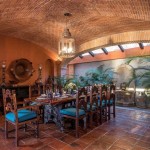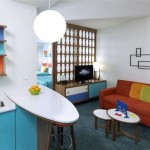The Titanic's Interior: A Symphony of Luxury and Grandeur
The RMS Titanic, a symbol of opulence and tragedy, was renowned not only for its sheer size but also for its meticulously designed interior. From the opulent first-class suites to the modest third-class cabins, the ship offered a glimpse into the social hierarchy of the early 20th century. The interior design of the Titanic was a testament to the craftsmanship and artistic sensibilities of the era, reflecting a desire to create a floating palace that would rival the grandeur of any land-based mansion.
First-Class Opulence: A World of Privilege
The first-class accommodations aboard the Titanic were the epitome of luxury. Passengers in this category enjoyed spacious suites with private bathrooms, large windows offering panoramic views, and elaborate furnishings. The First-Class Grand Staircase, a masterpiece of wrought iron and polished wood, served as a central gathering point, where passengers could mingle and enjoy live music. The à la carte restaurant, with its expansive dining room and exquisite menu, provided a culinary experience unlike any other at sea. The first-class smoking room offered a place for gentlemen to relax, while the library provided a sanctuary for those seeking quiet contemplation.
The first-class suites were decorated in a lavish style, with opulent fabrics, intricate woodwork, and exquisite lighting fixtures. The use of mahogany, walnut, and other rich woods, combined with plush carpets and velvet upholstery, created an atmosphere of warmth and comfort. Artworks, including paintings and sculptures, adorned the walls, further enhancing the aesthetic appeal of the space. These suites were designed to provide the ultimate in comfort and privacy, offering a haven of luxury for the wealthy passengers.
Second-Class Comfort: A Balanced Approach
The second-class accommodations on the Titanic, while not as lavish as the first-class suites, still offered a comfortable and refined experience. Passengers in this category had access to a separate dining room, lounge, and promenade deck, which offered stunning views of the ocean. The cabins themselves were also well-appointed, featuring sturdy furnishings, comfortable beds, and ample storage space. While the second-class accommodations were not as grand, they provided a level of comfort and privacy that was considered desirable for the time.
The second-class dining room was designed to be elegant and inviting, with comfortable seating and a menu that offered a variety of delicious dishes. The second-class lounge provided a space for passengers to relax and socialize, while the promenade deck offered a place to enjoy the fresh air and the views of the sea. The second-class accommodations were designed to provide a balanced approach, catering to the needs of passengers who desired a comfortable and stylish experience without the extravagant expense of first-class.
Third-Class Functionality: Basic Needs Met
Third-class accommodations were primarily designed for functionality, catering to the needs of passengers who sought the most affordable option. The third-class cabins were smaller and more basic than their first- and second-class counterparts, with shared bathrooms and limited amenities. The emphasis was on providing a safe and comfortable space for the journey, with the understanding that the passengers would spend most of their time in the communal areas of the ship. The third-class passengers had access to a dedicated dining room, a gymnasium, and a reading room, providing basic amenities for their needs.
The third-class cabins were typically furnished with bunk beds, small tables, and minimal storage space. The use of wooden and metal furniture, along with simple fabrics, reflected the practicality of the design. While the third-class accommodations lacked the extravagance of the higher classes, they offered a functional and reasonably comfortable space for passengers from a more modest background.
Beyond the Cabins: Common Spaces and Recreation
Beyond the individual cabins, the Titanic offered a variety of common spaces designed for relaxation, entertainment, and social interaction. The gymnasium, located on the boat deck, provided passengers with a place to exercise and stay active. The swimming pool, a rare amenity for ships of that era, offered a refreshing escape from the sea air. The Turkish Baths, designed for relaxation and rejuvenation, provided a luxurious experience for those seeking a respite from the journey. The reading room, with its extensive library, provided a quiet space for passengers to indulge in their favorite books or simply relax and observe the world around them.
The Titanic's interior design was a testament to the ingenuity and creativity of the era. The ship's architects and designers combined functionality with elegance, creating spaces that catered to the needs and desires of passengers from all walks of life. From the luxurious suites to the spacious dining rooms and the lively social areas, the Titanic offered a glimpse into the opulence and sophistication of the Edwardian era.

The Claustrophobic Conditions Inside Oceangate Titanic Submarine Daily Mail

What It Was Like Inside The Titan Lost Titanic Touring Submersible Cnn

S From Inside Titanic Submarine Have Left People Terrified 22 Words

How Does The Missing Titan Submersible Work Here S A Look Inside

What Was It Like Inside The Oceangate Titan Submersible News Us Metro

Metro Co

Expedition Takes You 12 000 Feet Under The Sea To See Titanic

Inside Titanic S Lavish Interior Ultimate
How The Unconventional Design Of Titan Sub May Have Destined It For Disaster Ap News

Titan Submersible The Specifications Capabilities Cost Safety All About That Vanished During A Dive To Titanic Shipwreck Economic Times








